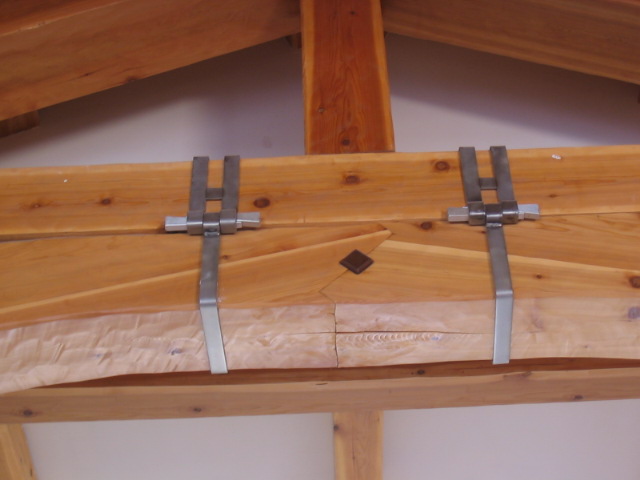
In timber frame construction, a scarf joint (also known as a splice joint) joins two pieces of wood, when individually they aren’t long enough for the desired purpose. Notches are cut so that the pieces fit snugly and smoothly together like a jigsaw puzzle. This method is much stronger than other kinds of joinery like butt joints. In this article, we’ll answer the question “what is a scarf joint” and list the various kinds of scarf joints used in timber scarf joint design. We’ll also briefly explain how a scarf cut is made.
For expertise with timber frame engineering that uses locally sourced wood, speak to the professionals at Hamill Creek Timber Homes.
What Are the Different Types of Scarf Joints?
There are several varieties of timber frame scarf joints, from simple to sophisticated. Some use a mortise and tenon (slot and peg) design for additional strength. An effective scarf joint requires precise cuts of 45 degrees, though some builders use 66-degree cuts. This is difficult to use without a miter saw or a miter box and handsaw. Ideally, the joined pieces of timber should appear seamless.
Selected Types of Scarf Joints:
Simple Half Lap Scarf Joint
- Most basic scarf joint to join two timbers
- Each timber has half its depth cut out (top/bottom)
Bridle Scarf Joint
- Has a centerpiece that spans the depth of the post which fits into a slot in the other timber
- Secured with wooden pegs
Half and Bridled Scarf Joint
- beams are split longitudinally
- Connected on one end with a mortise and the other end with a tenon
Stop Splayed Scarf Joint
- Two timbers meet along a long angled face
- The “stop” is the perpendicular edge that creates surface tension for a stronger joint
Stop Bladed Scarf Joint
- Half-lap joint with added stops (tongues, blades)
- Can include cogs and pegs or just cogs
- Cogs are t-shaped projections in the tenon
- Requires more work but helps to lock the joint in place and improves horizontal load strength
Pegged Bladed Scarf Joint
- Half-lap joint with added blades or tongues that connect the beams
- Blades provide additional surface area to create a strong and attractive joint
- Uses pegs to join the timbers
- Often used for a roof plate or sill plate
- Structural screws or steel rods are added for areas that have light sustained tension
- Can be more easily cut with a chain mortiser
Half Lap Scarf Joint with Table
- Like other half-lap joints but with timbers split longitudinally
- Can also use wedges between tables
Double Tenoned Scarf Joint
- Can use a hardwood wedge or pegs to connect the pieces
- Structural screws in place of the pegs is optional
Under-Squinted Scarf Joint with Wedge
- This type of joint is both attractive and extremely strong
- In scarf joints, a squint or under-squint is a non-square (not 90-degree) abutment
- Can use a wooden wedge with or without pegs
Do different scarf joints serve different purposes? All types of scarf joints serve a single purpose — to cover a span longer than the length of your timbers. However, depending on your application, your engineer’s level of expertise and how the scarf joint and timbers fit into the rest of your home design, one type may be better suited than another.
How Do You Make a Scarf Cut?
The tapered cuts for a timber frame scarf joint can be made with a miter saw. Builders have different opinions as to the ideal cut, and this may vary depending on your specific application—for example, a timber frame truss or a baseboard trim. Some common angles are 30 degrees, 45 degrees and 66 degrees.
For a timber frame, the general rule for scarf joint size and location is as follows:
- The length of overlap should be approximately four times the depth of your timber. For example, if your timbers are 12 inches deep, the scarf should be four feet.
- Don’t place a scarf directly over a post, as this is where the highest shear point is.
- Place the scarf away from the midway point between vertical supports. This is the location that bears the greatest load pressing down on the plate (the supporting horizontal timber).
Hamill Creek – Your Best Resource for Timber Frame Construction
For more than three decades, Hamill Creek has been building the highest quality timber homes and providing construction knowledge and expertise to our clients. If you have questions about scarf joints and other building techniques or would like to discuss your timber frame project, give us a call!